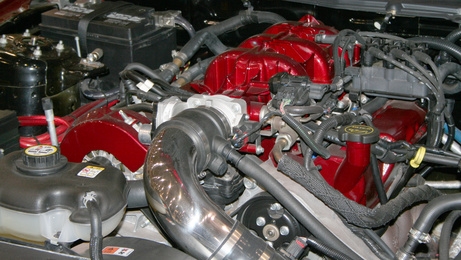
You can improve your Suzuki Sidekick gas mileage in two ways. Changing your driving habits is the easiest step. Slowing down on the freeway saves gas. The next steps are a car tune-up and a fuel flow check. Fill up all fluids, change spark plugs and wires, add fuel cleaner, change your oil and filter, and change your air and fuel filters. Beyond that, a bad fuel pump is a possible culprit if you are experiencing poor fuel economy.
Drive in a way that conserves fuel. Avoid racing your engine. Start gradually and accelerate slowly. Choose the freeway and avoid stop-and-go traffic. Avoid riding the brake.
Drive at a steady top speed of 55 miles per hour on the freeway. Accelerate slightly and naturally going downhill, and never accelerate up a hill. Hold your vehicle at a steady velocity going up hills. Choose flat routes rather than courses through hills.
Replace your spark plugs and spark plug wires.
Change your oil and filter. Use oil additive to restore compression if your vehicle has more than 100,000 miles. Restore compression to increase power and acceleration and improve fuel efficiency.
Change your fuel filter. Use a fuel pressure gauge and check fuel pressure after removing the fuel line from the intake side of the fuel filter. Insert the gauge hose into the fuel line and crank the vehicle. Compare the reading to the correct pressure listed in your manual or Suzuki's recommended pressure. Check your fuel pump if the pressure is low.
Use a fuel cleaner in the tank. For models with a carburetor, spray clean the carburetor with carburetor cleaner. Crank the vehicle, remove the air filter cover and spray the carburetor until it's clean. Remove all dirt and grease to dramatically improve performance and mileage. Use fuel injector cleaner in the tank for models with fuel injectors instead of carburetors. Replace your air filter.
Fill all fluids to proper levels, including oil, brake, power steering and radiator fluids.
Adjust your idle to factory settings.
Test the Throttle Position Sensor if you have an uneven idle. Turn on your digital multimeter, set it to "Ohms check," and disconnect the plastic connection that leads to the TPS as shown in the referenced video. Contact the leads of the multimeter to the electrical contacts in the connector, check the resistance, and compare your results to the manufacturer specifications or the electrical values listed in the repair manual.